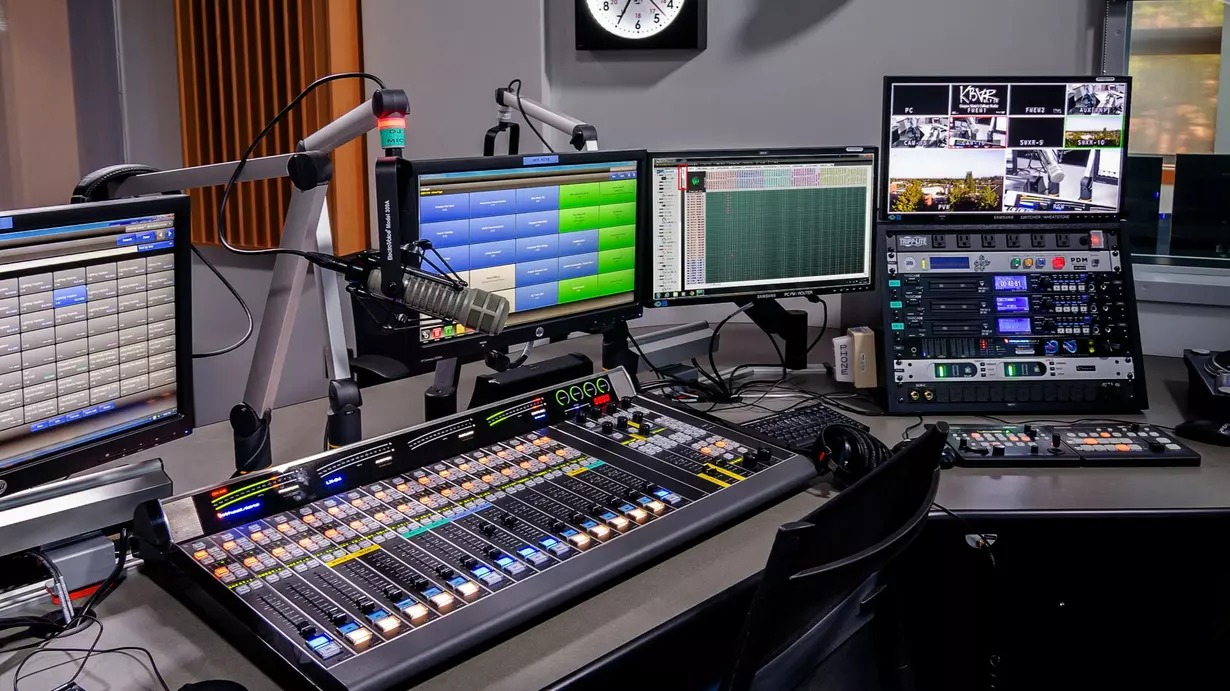Role of Audio Editing Features in Radio Station Software

In the vibrant world of radio broadcasting, audio quality and content delivery are paramount. As radio stations evolve from traditional analog formats to digital platforms, the importance of sophisticated radio station software has become increasingly evident. One of the key components of this software is its audio editing features, which empower broadcasters to create, modify, and enhance audio content effectively. This article delves into the role of audio editing features in radio station software and how they contribute to the overall success of radio broadcasting.
The Importance of Audio Quality in Radio Broadcasting
Audio quality is the cornerstone of effective radio broadcasting. Poor sound quality can detract from the listener's experience and undermine the credibility of the station. High-quality audio not only enhances the enjoyment of music but also ensures that spoken content, such as news and talk shows, is clear and engaging. As such, robust audio editing features in radio station software are essential for achieving professional-grade sound.
Key Audio Editing Features in Radio Station Software
- Multi-Track Editing
Multi-track editing allows users to work with several audio tracks simultaneously. This feature is crucial for integrating different audio elements, such as music, voiceovers, sound effects, and jingles. Broadcasters can easily layer these tracks, adjust their volumes, and create a harmonious final product.
- Benefits: This capability enables producers to craft complex audio pieces that are rich and engaging. It also facilitates the mixing of live broadcasts with pre-recorded segments, ensuring a seamless listening experience.
- Audio Effects and Processing
Radio station software often includes a range of audio effects and processing tools, such as equalization, compression, reverb, and pitch correction. These tools help enhance the audio quality and create a polished sound.
- Benefits: By utilizing these effects, broadcasters can tailor their audio to fit specific genres or styles, ensuring that the station's identity resonates with its target audience. For example, a rock station may use heavier compression to give songs a more powerful sound, while a talk radio station may prioritize clarity and warmth in spoken segments.
- Audio Restoration Tools
Over time, audio recordings can suffer from issues such as background noise, clicks, and pops. Audio restoration tools within radio station software can help clean up these imperfections, restoring the audio to its intended quality.
- Benefits: These tools are particularly useful for stations that archive older recordings or air segments from live events. By improving the quality of archived content, stations can maintain a high standard for all broadcasts.
- Batch Processing
Batch processing allows users to apply specific edits or effects to multiple audio files simultaneously. This feature can save significant time and effort, especially for stations dealing with large volumes of content.
- Benefits: For instance, a radio station may want to normalize the volume levels of a series of songs or apply a standard set of effects to all voiceovers. Batch processing makes these tasks efficient, freeing up staff to focus on creative aspects of production.
- User-Friendly Interface
A user-friendly interface is crucial for effective audio editing. Many radio station software solutions offer intuitive layouts and workflows that make it easy for users to navigate through editing tools and features.
- Benefits: A well-designed interface reduces the learning curve for new staff and enables seasoned producers to work more efficiently. This is especially important in a fast-paced broadcasting environment where time is often of the essence.
- Integration with Other Tools
Modern radio station software often integrates seamlessly with other tools and platforms, such as automation systems, music libraries, and scheduling software. This integration enhances the overall functionality of the broadcasting operation.
- Benefits: For example, a broadcaster can easily pull music tracks from a digital library, edit them, and schedule them for future airplay—all within the same software ecosystem. This streamlines workflows and improves overall productivity.
Enhancing Listener Engagement
Audio editing features play a crucial role in engaging listeners. High-quality audio content can capture attention and keep audiences tuned in longer. By utilizing the advanced editing capabilities of radio station software, broadcasters can create compelling segments that resonate with their target audience.
1. Creative Content Production
With powerful audio editing features, radio stations can experiment with different formats and styles. This flexibility allows for the creation of engaging content, such as:
- Themed Shows: Producers can craft shows around specific themes or events, enhancing listener interest and participation.
- Interactive Segments: By incorporating listener calls, sound bites, and other interactive elements, stations can create dynamic broadcasts that foster audience engagement.
2. Customization and Branding
Audio editing features enable radio stations to develop a unique sound that reflects their brand identity. This includes:
- Custom Jingles and Promos: Crafting original jingles and promotional spots that align with the station’s voice and mission.
- Consistent Audio Quality: Ensuring that all audio content meets a consistent standard enhances professionalism and reinforces brand recognition.
Challenges and Considerations
While audio editing features in radio station software provide numerous benefits, broadcasters must also consider some challenges:
- Learning Curve: Advanced editing tools can be complex, and staff may require training to utilize them effectively.
- Software Costs: Investing in high-quality radio station software with robust audio editing capabilities may require a significant budget. However, the long-term benefits often justify the initial investment.
Conclusion
The role of audio editing features in radio station software cannot be overstated. These tools are essential for enhancing audio quality, producing engaging content, and maintaining a strong brand identity in the competitive world of radio broadcasting. By leveraging the capabilities of modern audio editing software, radio stations can create professional-grade audio that captivates listeners and fosters loyalty. As technology continues to advance, the importance of these features will only grow, making them indispensable for the future of radio broadcasting.





